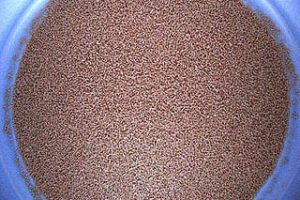ethanol
Sugarcane bioethanol: Environmental implications
Researchers have long promoted biofuels produced from crop biomass as an environmentally sustainable source of renewable energy. A recent study questions whether the potential climate benefit of sugarcane ethanol is diminished when emissions from la…
Overfertilizing corn undermines ethanol
Rice University scientists and their colleagues have found that when growing corn crops for ethanol, more means less.
A new paper in today’s online edition of the American Chemical Society’s journal Environmental Science and Technology shows how …
US does not have infrastructure to consume more ethanol
WEST LAFAYETTE, Ind. – The United States doesn’t have the infrastructure to meet the federal mandate for renewable fuel use with ethanol but could meet the standard with significant increases in cellulosic and next-generation biofuels, accor…
‘Green genes’ in yeast may boost biofuel production by increasing stress tolerance
An effort to increase biofuel production has led scientists to discover genes in yeast that improve their tolerance to ethanol, allowing them to produce more ethanol from the same amount of nutrients. This study, published in the December 2010 issu…
Grasses have potential as alternate ethanol crop, Illinois study finds
CHAMPAIGN, Ill. — Money may not grow on trees, but energy could grow in grass. Researchers at the University of Illinois have completed the first extensive geographic yield and economic analysis of potential bioenergy grass crops in the Mid…
Neutrons helping ORNL researchers unlock secrets to cheaper ethanol
OAK RIDGE, Tenn., Sept. 15, 2010 — New insight into the structure of switchgrass and poplars is fueling discussions that could result in more efficient methods to turn biomass into biofuel.
Researchers from the Department of Energy’s Oak Ridge Na…
Experimental 'coffee cocktail' tested as way to limit stroke damage
An experimental drug delivering the potency of two cups of strong coffee and a mixed drink has been shown to limit stroke-induced brain damage in animals. Now, this agent has been demonstrated to be safe in a small pilot study of ischemic stroke patients reported in today’s rapid access issue of Stroke: Journal of the American Heart Association.


